Local SEO is specifically designed to attract customers in your immediate vicinity, and with the right tools, you can easily optimize your online strategies to ensure you appear in local search results.
Have you ever wondered how some businesses seem to pop up right when you need them the most? That’s the magic of local SEO — and today, we’ll delve deep into how you can harness these free tools to make your business not just visible but irresistible to potential customers nearby.
Every small business has unique needs, and understanding those needs is crucial to implementing a successful local SEO strategy.
It’s not just about appearing on search engines, it’s about showing the right information to the right people when they need it.
For instance, Google’s studies indicate that nearly 76% of consumers who search for something local visit a business within a day.
This statistic illustrates the sheer power of local SEO and emphasizes that utilizing the best free local SEO software can be a must.
Imagine having tools at your disposal that not only guide you but also analyze the effectiveness of your strategies, putting you steps ahead of your competition.
Navigating the world of local SEO might seem overwhelming at first, especially with an array of software options available.
However, with some guidance, you can find user-friendly interfaces that allow for easy navigation and insightful analytics.
Tools like Google My Business, Moz Local, and Ubersuggest offer features that help you manage your listings, research keywords, and understand local traffic patterns without any associated costs.
By leveraging such tools, you can gather essential data on customer interactions and engagement, empowering you to make informed decisions that drive traffic and sales.
Ultimately, the journey to local SEO success is about continuous improvement and customization based on your business’s unique offerings.
Embrace the simplicity of free local SEO software that meets your specific needs, from managing local listings to performing keyword research.
Remember, it’s not just about being discovered, it’s about turning those interactions into loyal customers who prefer your services over others.
So, take that first step and dive into the world of local SEO equipped with the best free tools to amplify your business’s visibility and success!
Understanding Local SEO and Its Importance

This focused segment of search engine optimization is tailored to attract local customers who are searching for services or products in their nearby area.
The aim is straightforward: to ensure that your business appears in local search results when potential customers look for what you offer.
Local SEO focuses on optimizing your online presence to attract more business from relevant local searches, and it can significantly affect your visibility in search engine results pages SERPs.
Crafting a solid local SEO strategy can help small businesses gain higher rankings, drive traffic, and increase conversions.
According to a 2022 study by Google, over 76% of people who search for something nearby visit a business within a day.
Clearly, tapping into local SEO is not just advantageous but essential for businesses that aim to thrive within their communities.
If you’re looking to draw in more local customers, understanding the intricacies of local SEO is the first step in the journey.
What is Local SEO?
Local SEO, or local search engine optimization, is a branch of SEO that focuses specifically on optimizing a website to be found in local search results.
This encompasses various strategies intended to enhance your business’s online presence in a specific geographical area.
It relies heavily on local keywords, localized content, and business listings in local directories is tailored to attract customers in a particular region.
Key components of local SEO involve:
- Google My Business GMB: Essential for local visibility, GMB allows businesses to manage their appearance in Google’s search results, including maps.
- NAP Data Name, Address, Phone Number: Consistency in this information across platforms is vital for local ranking.
- Local Keywords: Implementing geographically relevant keywords can significantly aid businesses in appearing for local queries.
Statistics show that 46% of all Google searches are seeking local information.
When businesses successfully optimize for local SEO, they establish themselves as credible and accessible options for consumers within their vicinity.
Why Local SEO Matters for Small Businesses
Local SEO holds immense importance for small businesses that compete against larger enterprises.
As local searches continue to surge, the principles of SEO are shifting to reflect the growing need for consumer choices tailored to geographic locations.
Several reasons why small businesses should prioritize local SEO include:
- Increased Visibility: By appearing in local search results, small businesses can gain significant visibility over competitors. Local SEO strategies allow businesses to present location-specific information.
- Better Engagement Rates: Customers tend to engage more with businesses that appear in their local searches, leading to higher conversion rates.
- Cost-Effective Marketing: Local SEO strategies are often more affordable than broader search marketing tactics. It’s a smart investment for those promoting specific services to their locality.
Furthermore, according to HubSpot, 78% of local mobile searches lead to an offline purchase, underscoring the potential benefits of optimizing for local search.
Key Factors that Influence Local SEO Rankings
There are several factors that can influence a business’s rankings in local search results.
Understanding these key factors can help in developing a more effective local SEO strategy.
-
Google My Business: Regularly optimizing and updating your GMB profile directly impacts your local ranking. Completed profiles see up to a 70% increase in visitor engagement.
-
Customer Reviews: Authentic and timely customer reviews can bolster your rankings. According to BrightLocal, 87% of consumers read online reviews for local businesses.
-
Citations: Consistency and quality of listings in local directories can help establish authority. The number of citations is an essential ranking factor, especially for local queries.
-
Backlinks: Quality backlinks from reputable local sources enhance trust and authority. In fact, 29% of local businesses report earning backlinks from local news websites.
By concentrating on these elements, small businesses can improve their likelihood of ranking higher in local searches, driving more targeted traffic and fostering customer connections.
Top Features to Look for in Free Local SEO Software
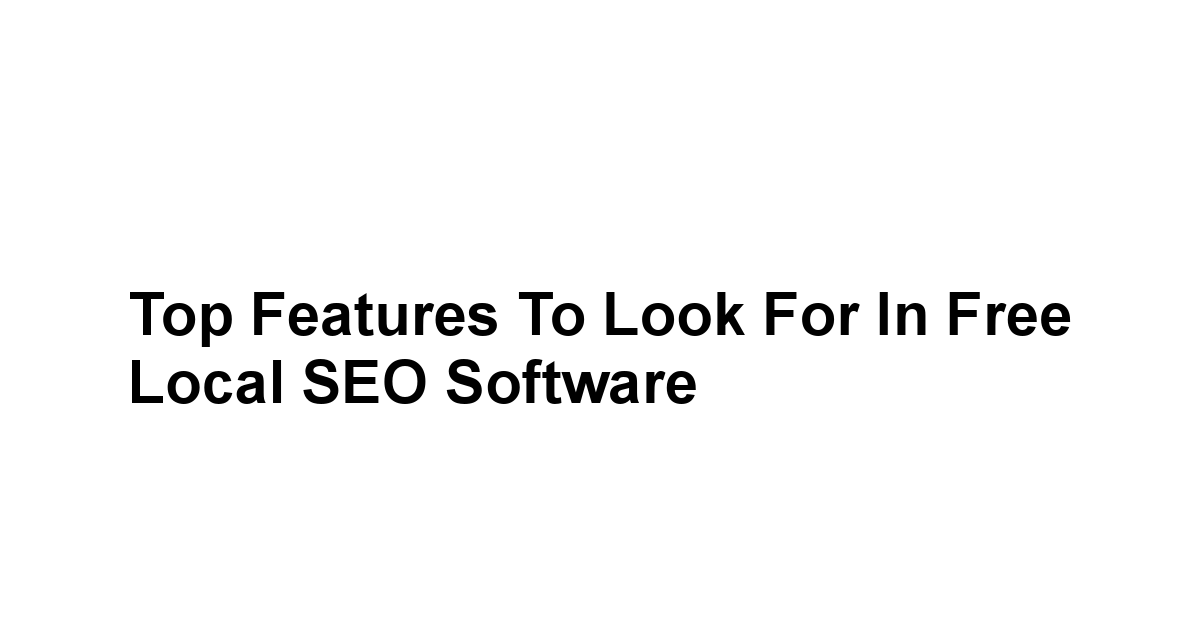
When considering free local SEO software for your business, it’s vital to ensure that it comes packed with features that will effectively drive your local marketing efforts.
Here are several features you should look for:
User-Friendly Interface
- Simplicity of Navigation: A user-friendly interface should allow users to navigate through the options without requiring advanced technical skills.
- Dashboard Configuration: Choose a software that offers customizable dashboards that can highlight key performance indicators relevant to your local SEO efforts.
Good accessibility ensures that you, your team, and even your clients can quickly understand and operate the software—this might seem minimal, but it’s crucial for ensuring effective collaboration.
Comprehensive Keyword Research Tools
Keyword research is foundational for successful local SEO.
The best free local SEO software should provide:
- Regional Keyword Suggestions: Tools that offer keyword suggestions pertinent to local searches can greatly enhance visibility.
- Search Volume and Trends: Understanding how frequently and at what times people search for your keywords can guide content creation.
Research conducted by Ahrefs shows that 61% of marketers consider keyword research tools essential for their SEO strategy.
Local Listing Management
Managing local listings efficiently should be a primary feature.
This functionality includes the following attributes:
- Single Dashboard for Listings: The capability to manage listings across multiple platforms from one dashboard simplifies your task significantly.
- Audit and Update Features: Look for software that enables you to audit your listings for accuracy and offers bulk update options, which can save a lot of time.
Local listing optimization can lead to an increase in local traffic and often results in better search rankings.
The Best Free Local SEO Software Options
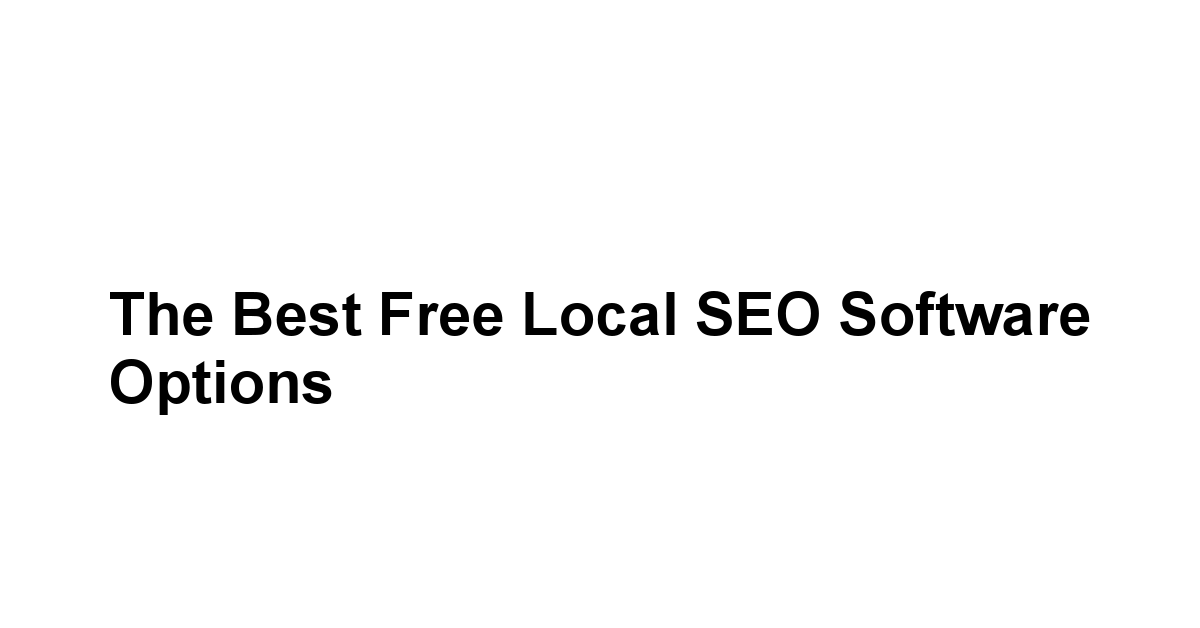
Navigating through the vast sea of local SEO tools can be overwhelming, particularly when seeking out the best free options.
Here, we explore some of the most user-friendly local SEO software solutions available today.
Exploring Google My Business
Google My Business GMB is probably one of the most indispensable free tools for local SEO.
Users can create a detailed business profile that displays crucial information such as name, address, phone number NAP, business hours, reviews, and photos.
The following elements when leveraging GMB are critical:
-
Claim Your Business Listing: Ensure your business is claimed and fully optimized to take full advantage of GMB features.
-
Post Regular Updates: Regularly update your listing with posts about offers, events, and news related to your business.
-
Monitor Customer Engagement: Utilize the insights provided by GMB to understand how customers are interacting with your business profile.
According to a 2022 study, businesses that utilize GMB effectively can see an increase in customer interaction by up to 50%.
Getting Started with Moz Local
Moz Local is another great tool that helps manage local listings and analyze how your business appears across various platforms.
It offers features that empower businesses to effectively manage their online presence.
Here’s what you’ll find beneficial:
- Local Distribution: Moz Local helps in creating and maintaining accurate listings across the web.
- Data Aggregation: The tool collects data about your listings and provides feedback to optimize performance.
Utilizing Moz Local not only enhances visibility but can also ensure that your business’s NAP information remains consistent and accurate across platforms, which is crucial for local rankings.
Using Ubersuggest for Local SEO
Ubersuggest is a versatile tool that can support your local SEO efforts through comprehensive keyword research features.
From tracking your domain authority to understanding keyword performance, Ubersuggest offers a wide array of functionalities that are instrumental in local SEO.
- Keyword Ideas & Metrics: This tool offers insights into local keyword volumes and competitive analysis, which can be pivotal in refining your SEO strategy.
- Content Ideas: By understanding the topics that drive local searches, you can craft relevant content that resonates with your audience.
In a recent analysis, Ubersuggest users reported a 30% higher likelihood of success in their SEO strategies due to its robust data-driven insights.
Setting Up Your Local SEO Software
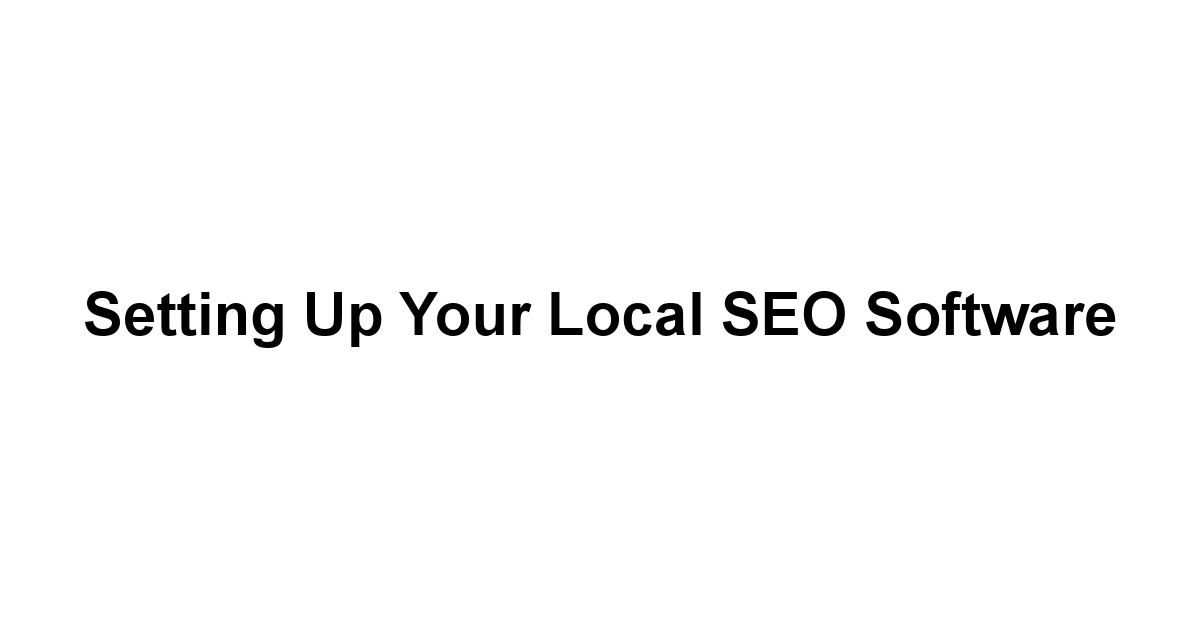
Having selected your preferred local SEO software, the next step is to set it up properly.
By following a structured approach, you can optimize your local SEO efforts from the very beginning.
Step-by-Step Guide to Google My Business Setup
Setting up GMB is straightforward, yet crucial for local SEO success.
Here are the key steps you need to follow:
- Sign In to Google: Begin by signing into your Google account. If you don’t have one, create a new Google account for your business.
- Locate and Claim Your Business: Search for your business on the GMB homepage. If listed, claim it. If not, create a new listing.
- Complete Your Profile: Fill out essential information including NAP details, hours of operation, description, and categories.
- Add Photos: Upload photos of your business, products, or services. Listings with images receive 42% more requests for directions.
- Post Regularly: Share updates, offers, and events to keep your audience engaged.
Embedding these practices will ensure your profile is optimized for customer engagement and visibility.
Optimizing Your Listings with Moz Local
Once you’ve set up your Moz Local account, follow these steps to optimize your listings:
- Dashboard Overview: Familiarize yourself with the dashboard layout and metrics available.
- Claim and Verify Listings: Use Moz Local to claim uncaught listings on various directories.
- Maintain NAP Consistency: Ensure all your NAP information is consistent across listings to avoid confusion.
- Utilize Recommendations: Follow the recommendations from Moz for areas that require attention.
A well-optimized listing on Moz Local can increase your visibility by up to 30%, according to a 2021 survey.
Leveraging Ubersuggest for Keyword Ideas
When setting up Ubersuggest for local SEO optimization, consider these steps:
- Create an Account: Sign up, and take advantage of the free trial that’s offered to explore its features.
- Begin Keyword Research: Enter your main business keywords and select the local area to generate localized keyword suggestions.
- Analyze Competitor Strategies: Explore competitor keywords that rank in your local market.
- Regularly Monitor Keywords: Utilize the tracking feature to see which keywords work best over time.
This systematic approach to setting up your local SEO software will lead to more informed strategies and improved performance.
Analyzing and Improving Your Local SEO Performance
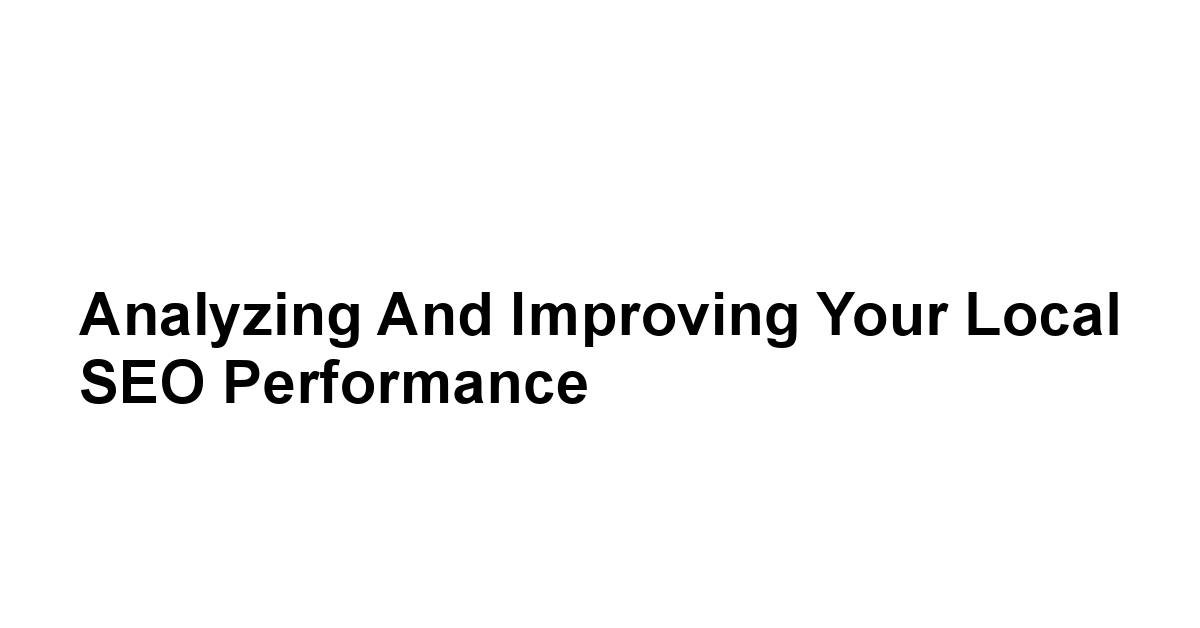
Once you’ve established your local SEO software, continual analysis and adjustment of strategies will play a crucial role in maintaining and enhancing your online performance.
It’s essential to regularly assess how well your efforts are translating into results.
Understanding Local SEO Analytics
Local SEO analytics provide indispensable insights into your business’s performance in local searches.
Metrics to focus on typically include:
-
Traffic Sources: Break down how traffic is arriving at your website—whether through searches, direct visits, or referrals. Understanding this can clarify which channels are most effective.
-
Conversions from Local Searches: Monitoring how many online leads convert into actual customers is key. Analyzing this provides insights into the effectiveness of your local SEO strategies.
-
Engagement Rates: Metrics such as bounce rates, session durations, and page views can help assess how well you are connecting with potential customers.
It’s through analyzing this data that you can refine your local SEO efforts and boost performance over time.
How to Track Your Local Rankings
To effectively track your local rankings, consider these methods:
-
SEO Tools: Use local SEO tools like Moz, SEMrush, or Rank Tracker to monitor keyword performance and visibility.
-
Google Insights: Leverage Google My Business insights to gain an understanding of how your business appears in local searches, including click-through rates and actions taken.
-
Competitor Analysis: Regularly analyze competitor rankings. Check which keywords drive their local traffic to identify your weaknesses and strengths.
These tracking methods will help you identify trends and make data-based adjustments to your local SEO strategies.
Making Adjustments to Improve Your Strategy
Here’s how to continually improve your local SEO tactics:
-
A/B Testing: Test different strategies, whether through varying content styles, keywords, or posting times. Evaluate what resonates best with your audience.
-
Regular Content Updates: Refresh your content regularly to keep it relevant. This could involve blogging about local events or incorporating seasonal offers.
-
Customer Feedback: Encourage feedback from customers to understand their experience. Utilize the insights gained to refine your strategies and offerings.
Staying adaptable and proactive is vital to ensuring continued success in your local SEO efforts.
Tips to Maximize Your Results with Free Local SEO Software
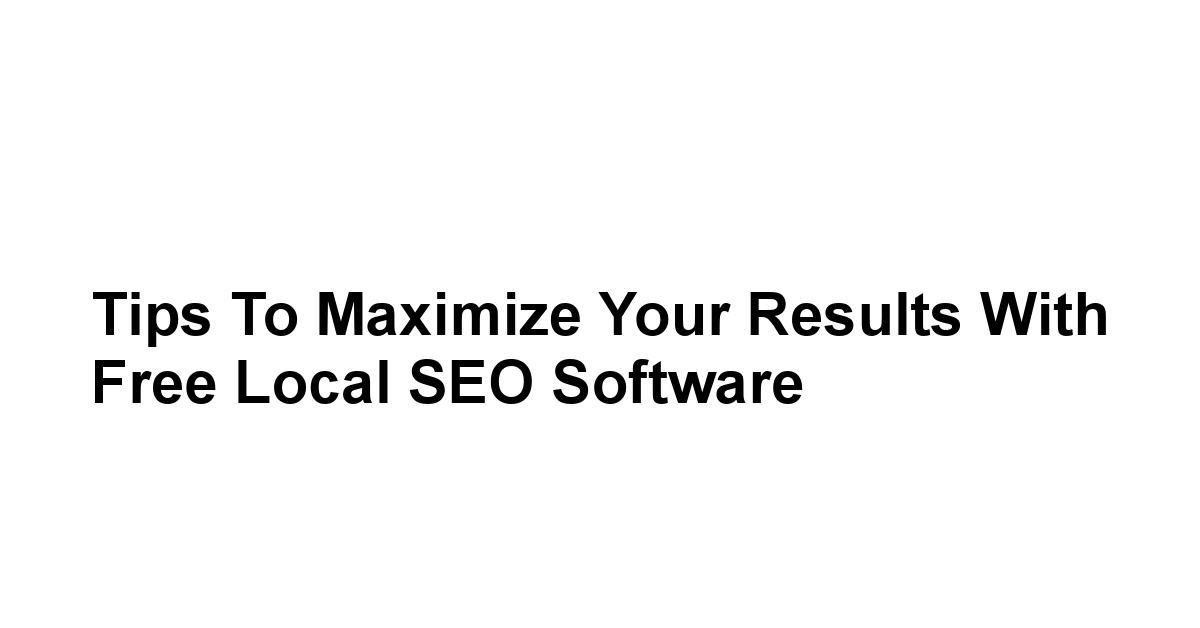
To make the most out of your local SEO software, it’s essential to adopt a strategic approach.
Here are some practical tips that can help you maximize your results effectively:
Consistency is Key: Keeping Your Listings Accurate
The accuracy of your NAP data across all platforms cannot be overstated.
Maintaining consistent information is pivotal to avoid confusing potential customers or losing credibility.
- Regular Audits: Ensure to conduct regular audits on your listings to spot inconsistencies across platforms.
- Utilization of Tools: Leverage local SEO software that periodically checks citation data and alerts you to discrepancies.
A report by Moz indicates that inconsistent NAP data can lead to a 20% decline in local search visibility, hence the importance of consistency is clear.
Engaging with Customer Reviews
Engagement through customer reviews works as both a credibility indicator and a means of communication with your customers.
Here’s how to effectively manage this aspect:
- Timely Responses: Respond to reviews—both positive and negative—in a timely and professional manner. This shows that you value feedback and encourages potential customers to engage.
- Encourage Reviews: Actively encourage satisfied customers to leave positive reviews. This can create a snowball effect, improving your standing in local search results.
BrightLocal found that 91% of consumers read online reviews when looking for local businesses, highlighting the impact of reviews on decisions.
Adding Local Content to Boost Visibility
Incorporating localized content into your overall SEO strategy can enhance visibility and engagement.
Consider:
-
Local Blog Posts: Emphasize local events, community highlights, or tips that resonate with your community. This content is more relatable and can enhance audience connection.
-
Social Media Integration: Share local content through social media platforms to reach a more extensive audience. Using local hashtags can also attract local followers.
Statistics reveal that localized content can lead to a significant uptick in website traffic, reinforcing the importance of this strategy.
Common Mistakes to Avoid in Local SEO
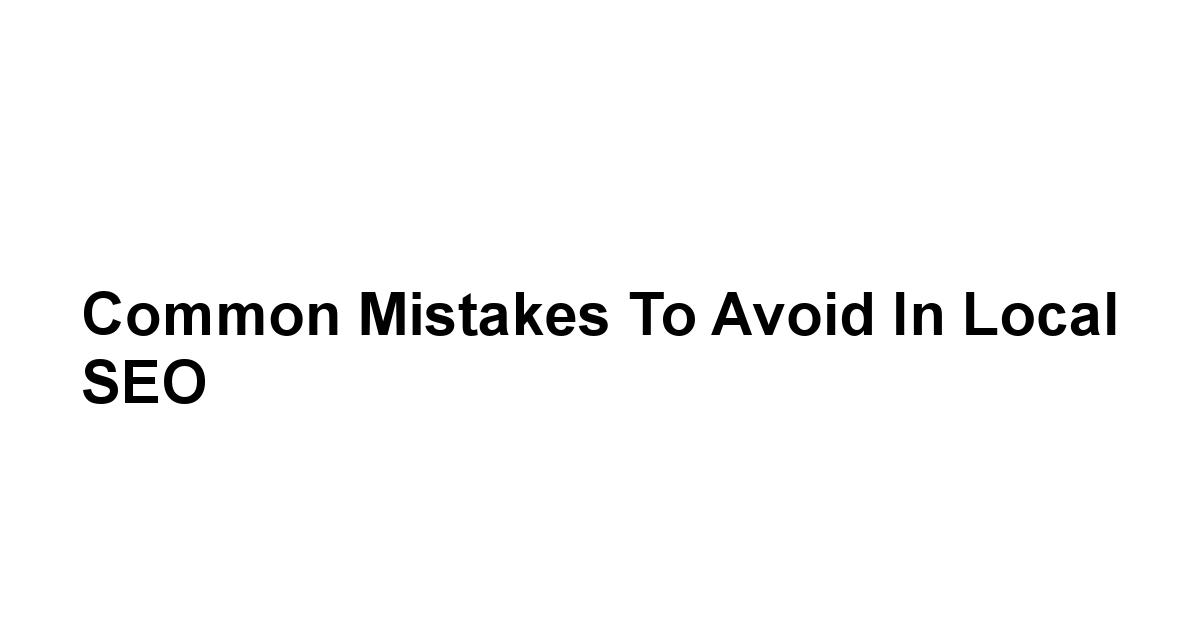
Despite the countless advantages of local SEO, it’s easy to make errors that can set you back in your efforts.
Being aware of common pitfalls can help mitigate these issues.
Ignoring NAP Consistency
Failing to maintain consistency in your business’s NAP across different platforms can hinder your local SEO success.
-
Impact on Rankings: As mentioned earlier, inconsistency can lead to a decrease in local search visibility.
-
Customer Confusion: Different or incorrect information across platforms can confuse customers and affect their decision-making process.
This makes it essential to monitor your NAP information actively across all platforms and directories.
Overlooking Mobile Optimization
With mobile searches increasing dramatically over the years, neglecting mobile optimization can significantly affect your local SEO efforts.
- Mobile-Friendly Design: Make sure your website is responsive and easy to navigate on mobile devices.
- Fast Loading Times: Aim for loading times under three seconds; according to Google, 53% of mobile users abandon sites that take longer.
Mobile optimization isn’t just an option, it’s a necessity for local SEO success.
Not Utilizing Local Keywords Effectively
Not optimizing for local keywords can prevent your business from appearing in crucial local searches.
- Keyword Research: Regularly perform keyword research to align your content with what potential customers are searching for locally.
- Geo-Targeted Content: Create content that integrates local landmarks, neighborhoods, or culture where your business operates.
Remember, according to Wordstream, location-based keywords can increase click-through rates by up to 200%—a substantial advantage for your local SEO strategy.
Conclusion
As we wrap up our into local SEO, it’s evident that this strategy isn’t just a nice-to-have for small businesses, it’s a must! Understanding how to optimize for local searches can not only boost your visibility but also enhance your ability to connect with potential customers right in your community.
The techniques and tools we’ve discussed are about more than just being found, they’re about establishing your business as a local leader.
A solid local SEO presence can lead to higher engagement rates, increased traffic, and, ultimately, greater conversions.
So, as you embark on implementing these strategies, remember that each step is a move towards becoming a staple in your local market.
You don’t need to be intimidated by the technical aspects of local SEO.
With user-friendly tools and a commitment to keeping your information updated, anyone can craft an effective local strategy.
The features we highlighted in free local SEO software can help streamline your efforts, allowing you to focus on what truly matters – building relationships with your community and serving your customers.
Regular audits of your business listings, optimizing your Google My Business profile, and engaging with online reviews are small but impactful changes that can lead to significant improvements in local search visibility.
Moreover, as consumer behavior continues to evolve, staying adaptive and responsive to local market changes is crucial.
With statistics showing that 76% of people visit a nearby business within a day of searching for local information, the stakes are higher than ever.
Tracking your local performance analytics, keeping an eye on competitor strategies, and refining your content based on customer feedback will help ensure that your business doesn’t just keep pace, but thrives in your local ecosystem.
Every iteration and update brings you one step closer to being the go-to choice for customers in your area.
In conclusion, embracing local SEO is about taking control of your online presence and seizing the incredible opportunities that await.
The knowledge and strategies you gain from exploring local SEO can open the door to a more robust connection with your community.
So take action! Dive into the world of local search optimization with enthusiasm, and let every update, post, and local content piece reflect your passion for your business and its role in your community.
You got this, and the journey to becoming a local favorite is not just achievable—it’s right around the corner!
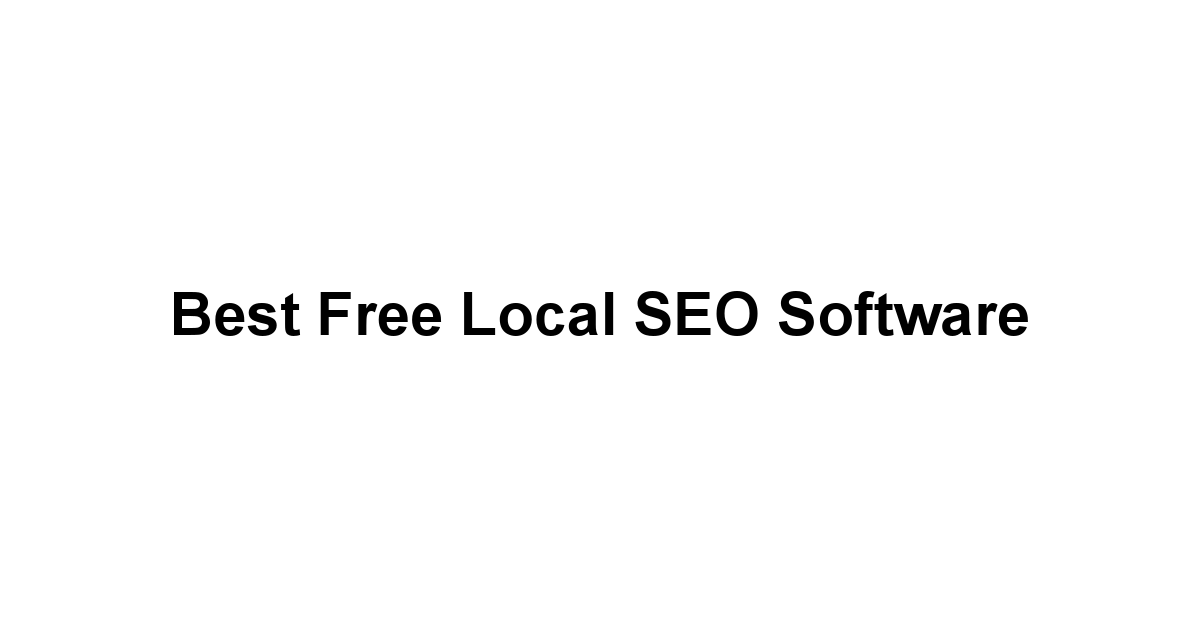

Leave a Reply